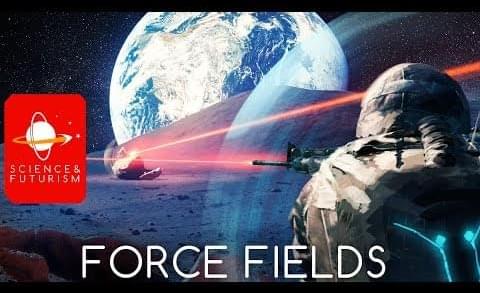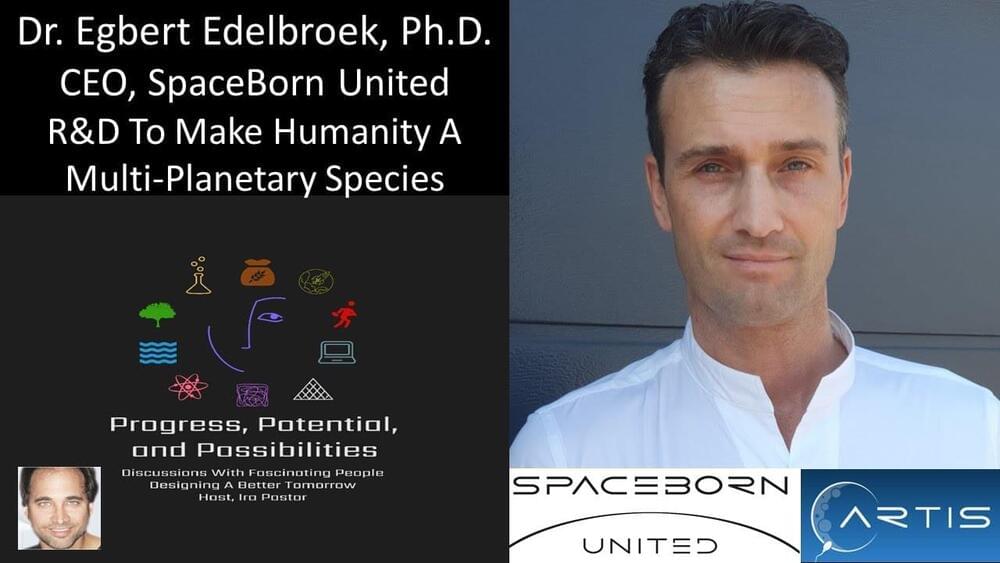playlist.
This series looks at devices and concepts we may see in future conflicts, and we will look at both hypothetical technologies and those limitations placed on us by fighting in space, for instance, rather than on the ground.

playlist.
This series looks at devices and concepts we may see in future conflicts, and we will look at both hypothetical technologies and those limitations placed on us by fighting in space, for instance, rather than on the ground.
Earlier this year, we announced our vision to empower any developer to become a space developer through Azure. With over 90 million developers on GitHub, we have created a powerful ecosystem and we are focused on empowering the next generation of developers for space. Today, we are announcing a crucial step towards democratizing access to space development, with the preview release of Azure Orbital Space SDK (software development kit)—a secure hosting platform and application toolkit designed to enable developers to create, deploy, and operate applications on-orbit.
By bringing modern cloud-based applications to spacecrafts we not only increase the efficiency, value, and speed of insights from space data but also increase the value of that data through the optimization of ground communication.
Many of the fundamental technological improvements that have accelerated the growth of Internet of Things (IoT) in the past decade remain untapped by space development missions today. With the Azure Orbital Space SDK, we will help bring those improvements to space through modern agile software deployment, container-based development, use of higher-level languages, and cloud-managed networking. Extending the power of the Azure cloud into space means that spacecraft development will take less time, cost less, and bring more people into the space development ecosystem.
The Internal Ramp Theory for the Great Pyramid of Egypt is one of the most interesting ideas ever proposed for its construction. French architect Jean-Pierre Houdin has spent more than 20 years developing and refining this idea.
In October of 2022, Houdin published an update to his theory which reflects the ScanPyramids findings from the past six years. The ScanPyramids ‘Big Void’ is an intriguing clue that Houdin may be correct with his notion of the Grand Gallery being used as a counterweight ramp for the largest pyramid stones.
The ‘Big Void’ may be another Grand Gallery-like space which could be used for the same purpose. Institutional Egyptology remains unreceptive to Houdin’s publications, nor the extremely confident results from the ScanPyramids mission.

Thank you to Wondrium for sponsoring today’s video! Signup for your FREE trial to Wondrium here: http://ow.ly/3bA050L1hTL
Researched and Written by Jon Farrow.
Narrated and Edited by David Kelly.
Animations by Jero Squartini https://www.fiverr.com/share/0v7Kjv.
Laniakea animation by Alperaym.
Incredible thumbnail art by Ettore Mazza, the GOAT: https://www.instagram.com/ettore.mazza/?hl=en.

Dr. Egbert Edelbroek, Ph.D. is the CEO & Founder of SpaceBorn United (https://spacebornunited.com/), a research and mission design company focused on researching optimal conditions for human reproduction in space, with a focus on novel assisted reproductive technologies.
Dr. Edelbroek is passionate about accelerating space life science research, helping humanity to become a multi-planetary species. His interest in space exploration accelerated shortly after he became a sperm donor in 2010 and when learned all about assisted reproductive technologies. This inspired him to explore options to re-engineer existing IVF technology for application in space.
NASA’s Mars helicopter Ingenuity has performed its shortest-ever flight, the first after a major software update that will allow the little chopper to land more safely and navigate over rugged terrain.
Ingenuity’s 34th flight, which took place on Tuesday (Nov. 22), lasted only 18 seconds and saw the helicopter briefly hover after takeoff above Mars’ surface before landing just 16 feet (5 meters) away from its starting point. The flight, the first since Sept. 29, was the first try-out of a new software system that was beamed to Ingenuity from Earth to improve its ability to operate in the rugged terrain that its parent Perseverance rover is currently exploring.
Observations of Exoplanet WASP-39b show fingerprints of atoms and molecules, as well as signs of active chemistry and clouds.
WASP-39 b is a planet unlike any in our solar system – a Saturn.
Saturn is the sixth planet from the sun and has the second-largest mass in the Solar System. It has a much lower density than Earth but has a much greater volume. Saturn’s name comes from the Roman god of wealth and agriculture.
Imagine a GPS for an asteroid-blocking spacecraft.
Based on the recent DART mission, scientists are working on perfecting a last-minute mission to deflect an asteroid heading for Earth.
Large-capacity wireless data transmission systems are demanded along with the development of multimedia services, video-based interactions, and cloud computing in the era of big data. Compared with radio-frequency communication systems, free-space optical (FSO) signal transmission technology has the merits of high data rate, great flexibility, less power consumption, high security, and large license-free bandwidths [1– 3], which has been widely applied in terrestrial transmission [4], last mile solutions [5], ground-to-satellite optical communication [6], disaster recovery [7], and so on. To date, up to 10 Gbit/s FSO communication system has been realized for transmission distance over 1,000 km of star-ground or inter-star communications [8], and 208 Gbit/s terrestrial communication is also reported at 55 m transmission distance [9]. Wavelength-division multiplexing (WDM) technology is commonly employed to improve data transmission capacity in fiber communication systems, which would be more effective in FSO communication systems benefitting from very weak non-linear cross talk between different frequency channels in free space. Based on a simulation platform, a WDM FSO communication system could boost the signal transmission capacity to 1.28 Tbit/s by modulating 32 optical channels with dual-polarization 16 quadrature amplitude modulation signals [10]. To date, beyond 10 Tbit/s FSO communication systems have been experimentally demonstrated recently using WDM technology [11,12]. However, a WDM communication system becomes power-hungry and bulky with the increase of transmission channels while traditional distributed feedback lasers are used as optical carriers. In addition, more rigorous requirement is imposed on the frequency tolerance of carrier lasers to avoid channel overlap with the decrease of channel frequency interval.
The invention of microresonator-based optical frequency combs provides novel integrated optical laser sources with the natural characteristic of equi-spaced frequency intervals which can overcome the challenge of massive parallel carrier generation [13 – 19]. In particular, the spontaneously organized solitons in continuous-wave (CW)-driven microresonators provide a route to low-noise ultra-short pulses with a repetition rate from 10 GHz to beyond terahertz. Soliton microcombs (SMCs) are typical stable laser sources where the double balances of non-linearity and dispersion as well as dissipation and gain are reached in microcavities. Meanwhile, the linewidth of the comb lines is similar with the pump laser, which enables low power consumption and costs multiwavelength narrow-linewidth carriers for a wide range of applications. Through designing the scale of microresonators, the repetition rate of SMCs could be compatible with dense wavelength-division multiplexing (DWDM) communication standard. To date, several experiments have demonstrated the potential capacity for ultra-high-speed fiber communication systems using SMCs as multiwavelength laser sources [20 – 30]. For instance, a coherent fiber communication system has improved the transmission capacity up to 55 Tbit/s using single bright SMCs as optical carriers and a local oscillator [20]. And dark solitons and soliton crystals are also employed as multiwavelength laser sources for WDM communication systems [27 – 30]. However, few studies have carried out massive parallel FSO communication systems using the integrated SMCs as laser sources.
In this paper, we experimentally demonstrate a massive parallel FSO communication system using an SMC as a multiple optical carrier generator. 102 comb lines are modulated by 10 Gbit/s differential phase shift keying (DPSK) signals to boost the FSO transmission rate up to beyond 1 Tbit/s. The transmitter and receiver terminals are installed in two buildings at a distance of ∼1 km, respectively. Using a CW laser as reference, the influence of optical signal-to-noise ratios (OSNRs) on the bit error rate (BER) performance is experimentally analyzed. Our results show an effective solution for large-capacity spatial signal transmission using an integrated SMC source which has potential applications in future satellite-to-ground communication systems.
Greer and Ivanov agree that existing, albeit limited, data on tetrataenite’s magnetic properties suggest that it may not match high-performance neodymium-based magnets. But the researchers maintain that optimization of the tetrataenite casting process could improve its magnetic properties and thus make it a worthwhile option. “It is good to have a wider range of permanent magnet materials, because that allows better balancing of such factors as magnetic performance and environmental impact,” Greer says. “A one-for-one swap with rare-earth magnets is not necessarily the goal.”
For now, the team has demonstrated how to make a piece of tetrataenite, but they say that future work will focus on how to consolidate many pieces into a bulk magnet. “The analogy here would be that we have shown we can make a brick—a piece of tetrataenite—but not yet a house—a magnet,” Greer says.
Beyond materials science, the researchers hint that this work may even impact astrophysics research as scientists reconsider how long it takes for tetrataenite to develop in a meteorite and how fast the cooling rate is in that space environment.